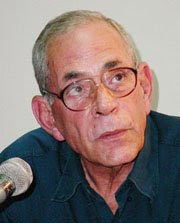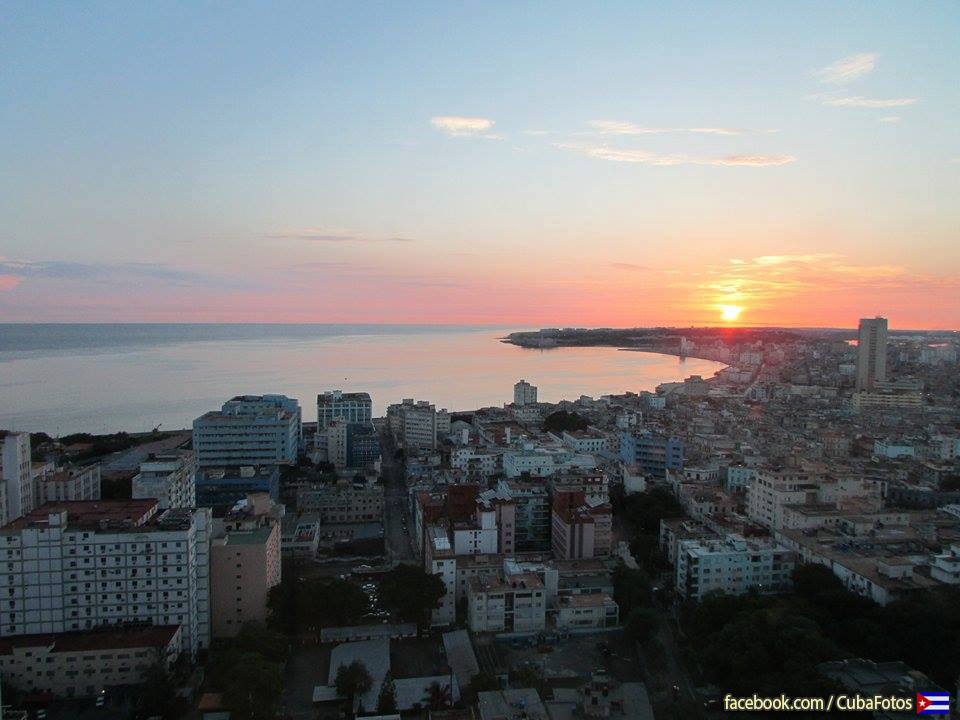SERGIO CORRIERI, FILM AND TELEVISION ACTOR.
Lucio Sergio Corrieri Hernández, born in Havana, on March 2, 1939.
He enrolled at the University Theater and debuted in 1954 with the group, in the Aula Magna, with the work of Brazilian Camargo Joracy.
Between 1956 and 1958, in different venues and with different groups of Havana, he participated in the following staging: Medea, directed by Francisco charming Morin; Evil Spirit of Francoise Mauriac, under the artistic direction of Paco Alfonso; The Lady of the Camellias, directed by Kookie Ponce de Leon; The immoralist, Andre Gide, with Eric Santamaria; Unburied dead of Jean-Paul Sartre, directed by Erick Santamaria; A postman and full of roses, E. Summers, directed by Kookie Ponce de León.
Founding member of the Group Theater Studio, his name appears among the signatories of the document creating the legendary band, in 1958. Among his works as an actor and artistic director of this important group can cite the following:
He starred in a long day trip into the night, Eugene O’Neill, staging of Vicente Revuelta, premiered at the Sala Hubert de Blanck on 10 October 1958. He played “Edmund, the youngest son.”
He made the character “Chef” in Mother Courage and Her Children, directed by Vicente Revuelta, released on December 21, 1961 at the Mella Theater.
He acted in Fuenteovejuna, Lope de Vega, directed and Vicente Revuelta Studio Theatre premiered in January 1963 at the Mella Theater.
Did the character of “Director of Theatre” in the bathroom, Mayakovsky, with artistic direction of Vicente Revuelta Mella released in November 1963 among many other presentations in the following years.
As an actor, artistic and managing director of that group, he attended the Festival of Nations and toured several cities in the United States, Canada and much of Latin America and Europe.
He was professor of theater at several national schools, such as the Municipal School of Art in Marianao, the National School of Art Instructors and the Instituto Superior de Arte in Havana.
Film
1962: Cuba’58 (second story). Address: José Miguel García Ascott
1962: Cuban Chronicle. Address: Hugo Ulive.
1964: Soy Cuba. Address: Mihail Kalatozov
1965: Uprooting. Address: Fausto Canell
1966: Papers are papers. Address: Fausto Canell
1968: The absence. Address: Alberto Roldan
1968: Memories of Underdevelopment. Address: Tomas Gutierrez Alea
1973: Man Maisinicú. Address: Manuel Pérez
1975: Mella. Address: Enrique Pineda Barnet
1976: Mina, Wind of Freedom. Address: Antonio Eceiza
1977: Black River. Address: Manuel Pérez
1985: Like life itself. Address: Victor Casaus
1986: Baraguá. Address: José Massip
TV.
On television his most significant work was “David,” the title of the serial Quietly had to be one of the most successful on Cuban television. We can not fail to mention the anthological version of Yerma television, filmed under the direction of Amaury Perez Garcia, in which he starred with Consuelo Vidal.
Since 1990 he served as President of the Cuban Institute of Friendship with the Peoples.
From that position, assumed the difficult times amid the collapse of the Soviet Union and the socialist camp, and of ideological wavering on the left.
Aware of his failing health also agreed, following the convening of the Seventh Congress of the UNEAC, presiding over the work of the Organizing Committee, highly appreciated gesture by artists and intellectuals who always saw him as an example.
He died on February 29, 2008 in Havana at age 69.
EcuRed / Extracts / InternetPhotos / TheCubanHistory.com
The Cuban History, Hollywood.
Arnoldo Varona, Editor.
SERGIO CORRIERI, ACTOR DE CINE Y TELEVISIÓN.
Sergio Lucio Corrieri Hernández, nació en La Habana, el 2 de marzo del año 1939.
Matriculó en el Teatro Universitario en 1954 y debutó con dicho grupo, en el Aula Magna, con la obra del brasileño Joracy Camargo.
Entre los años 1956 y 1958, en distintas salas y con diversos colectivos de La Habana, participó en las siguientes puestas en escena: Medea, la encantadora dirigida por Francisco Morín; Espíritu Maligno de Francoise Mauriac, bajo dirección artística de Paco Alfonso; La dama de las camelias, dirigido por Cuqui Ponce de León; El inmoralista, de Andre Gide, con Eric Santamaría; Muertos sin sepultura, de Jean-Paul Sartre, bajo dirección de Erick Santamaría; y Un cartero lleno de rosas, de E. Summers, dirigido por Cuqui Ponce de León.
Miembro fundador del Grupo Teatro Estudio, su nombre aparece entre los firmantes del Documento de creación de la legendaria agrupación, en el año 1958. Entre sus trabajos como actor o director artístico de este importante colectivo pueden citarse los siguientes:
Actuó en Viaje de un largo día hacia la noche, de Eugene O´Neill, puesta en escena de Vicente Revuelta , estrenada en la Sala Hubert de Blanck el 10 de octubre de 1958. Interpretaba a “Edmund, hijo menor”.
Hizo el personaje de “El cocinero” en Madre Coraje y sus hijos, dirigida por Vicente Revuelta, estrenada el 21 de diciembre de 1961 en el Teatro Mella.
Actuó en Fuenteovejuna, de Lope de Vega, que Vicente Revuelta dirigió y Teatro Estudio estrenó en enero del 1963 en el el Teatro Mella.
Hizo el personaje de “Director de Teatro” en El baño, de Maiakovski, con dirección artística de Vicente Revuelta estrenada en el Mella en noviembre de 1963 entre otras muchas presentaciones en los años siguiente.
Como actor, director artístico y general de ese colectivo, asistió al Festival de las Naciones y realizó un recorrido por varias ciudades de Estados Unidos, Canadá y buena parte de América Latina y Europa.
Fue profesor de teatro en varias escuelas nacionales, como la Escuela Municipal de Arte de Marianao, la Escuela Nacional de Instructores de Arte y también el Instituto Superior de Arte de La Habana.
Cine
1962: Cuba’58 (segundo cuento). Dirección: José Miguel García Ascott
1962 : Crónica cubana. Dirección: Hugo Ulive.
1964: Soy Cuba. Dirección: Mihail Kalatozov
1965: Desarraigo. Dirección: Fausto Canell
1966 : Papeles son papeles. Dirección: Fausto Canell
1968: La ausencia. Dirección: Alberto Roldán
1968: Memorias del subdesarrollo. Dirección: Tomás Gutiérrez Alea
1973: El hombre de Maisinicú. Dirección: Manuel Pérez
1975: Mella. Dirección: Enrique Pineda Barnet
1976: Mina, viento de libertad. Dirección: Antonio Eceiza
1977: Río Negro. Dirección: Manuel Pérez
1985: Como la vida misma. Dirección: Víctor Casaus
1986: Baraguá. Dirección: José Massip
Televisión.
En la televisión su trabajo más significativo fue “David,” el protagónico del serial En silencio ha tenido que ser, uno de los más exitosos en la televisión cubana. No podemos dejar de citar la antológica versión televisiva de Yerma, filmada bajo dirección de Amaury Pérez García, en la que actuó junto a Consuelo Vidal.
Desde 1990 se desempeñó como Presidente del Instituto Cubano de Amistad con los Pueblos.
Desde ese cargo, asumido en momentos sumamente difíciles en medio de la debacle de la Unión Soviética y el campo socialista, y de mudanzas ideológicas en el campo de la izquierda.
Aun cuando sabía su salud quebrantada también aceptó, a raíz de la convocatoria al VII Congreso de la UNEAC, presidir los trabajos de la Comisión Organizadora, gesto sumamente apreciado por la vanguardia artística e intelectual que siempre vieron en él un ejemplo.
Falleció el 29 de febrero de 2008 en La Habana a los 69 años.
EcuRed/Extractos/InternetPhotos/TheCubanHistory.com
The Cuban History, Hollywood.
Arnoldo Varona, Editor.



 SERGIO CORRIERI, Film and Television Actor. (Born: Havana). + SERGIO CORRIERI, Actor de Cine y la Televisión. (Nacido en La Habana).
SERGIO CORRIERI, Film and Television Actor. (Born: Havana). + SERGIO CORRIERI, Actor de Cine y la Televisión. (Nacido en La Habana).


